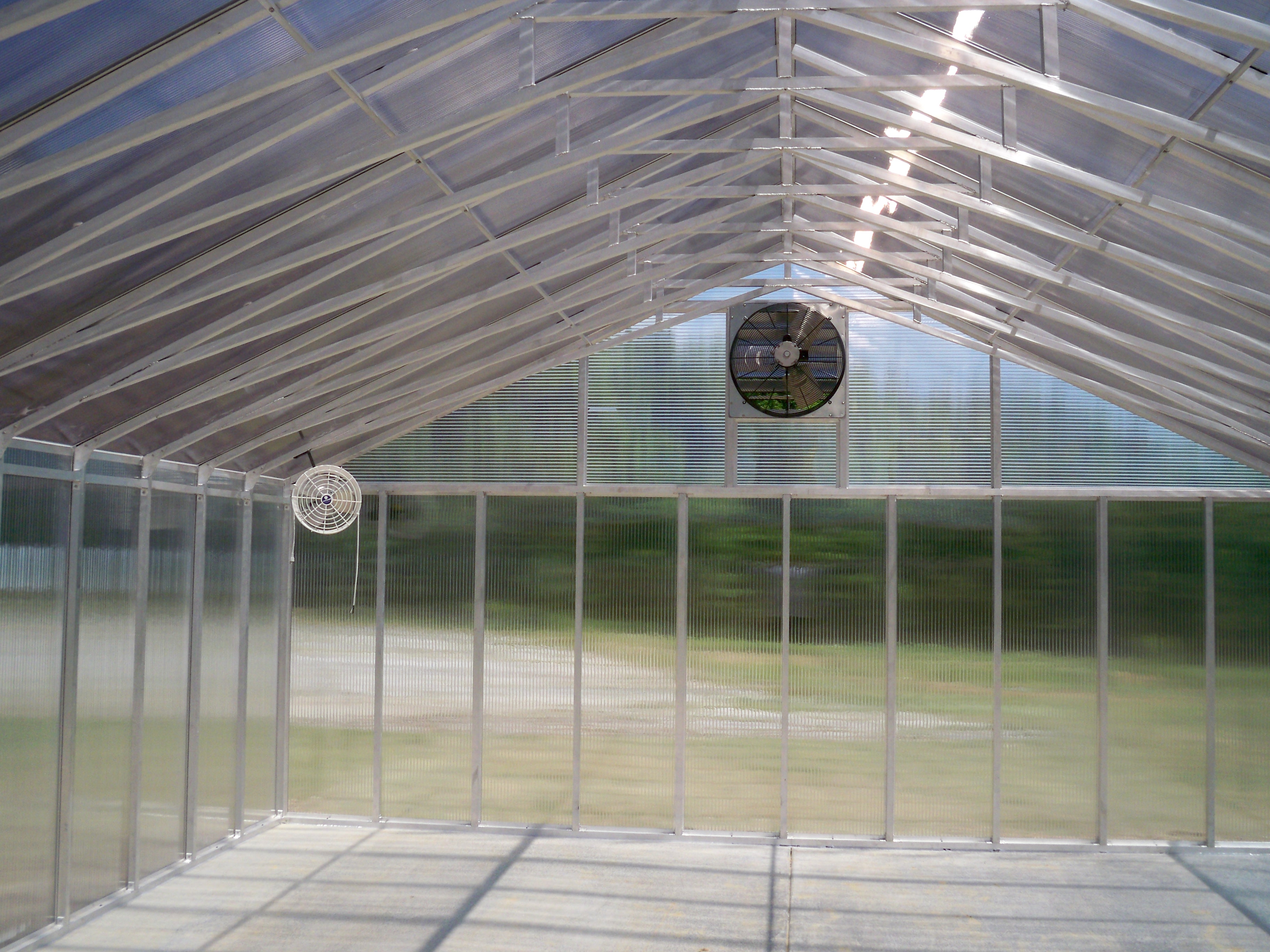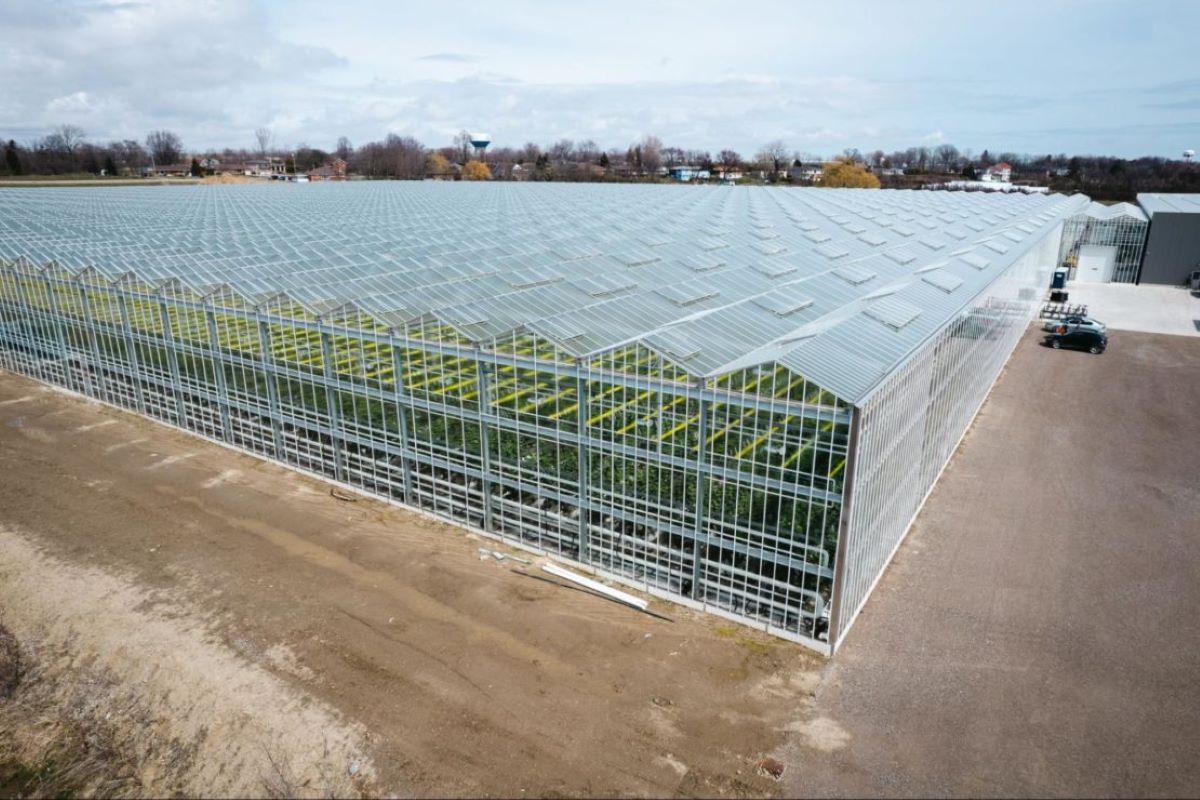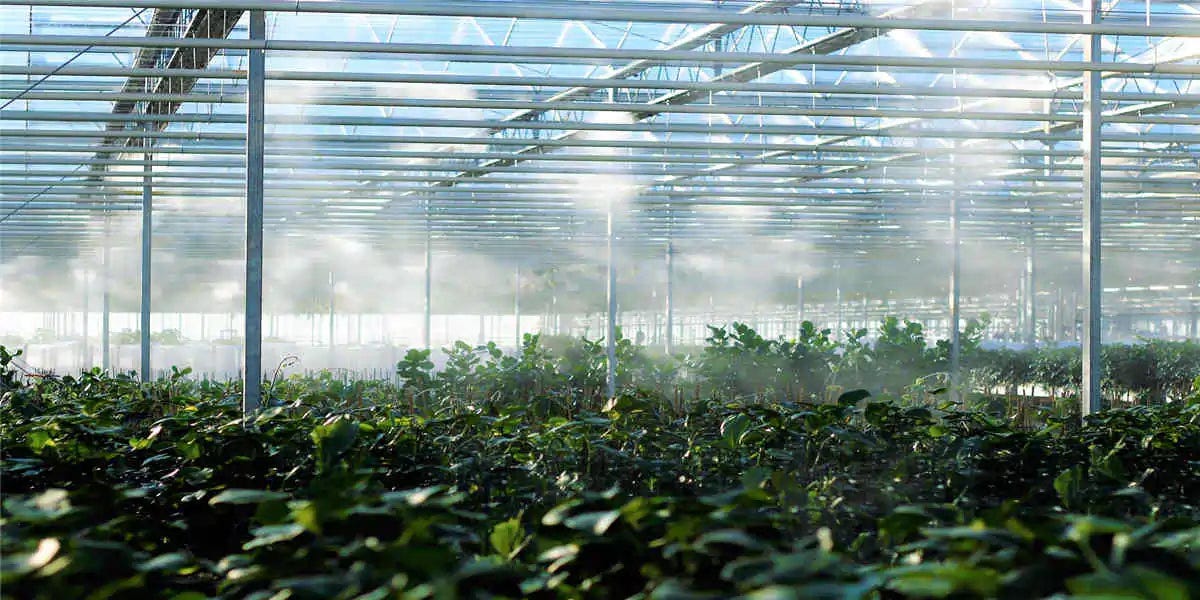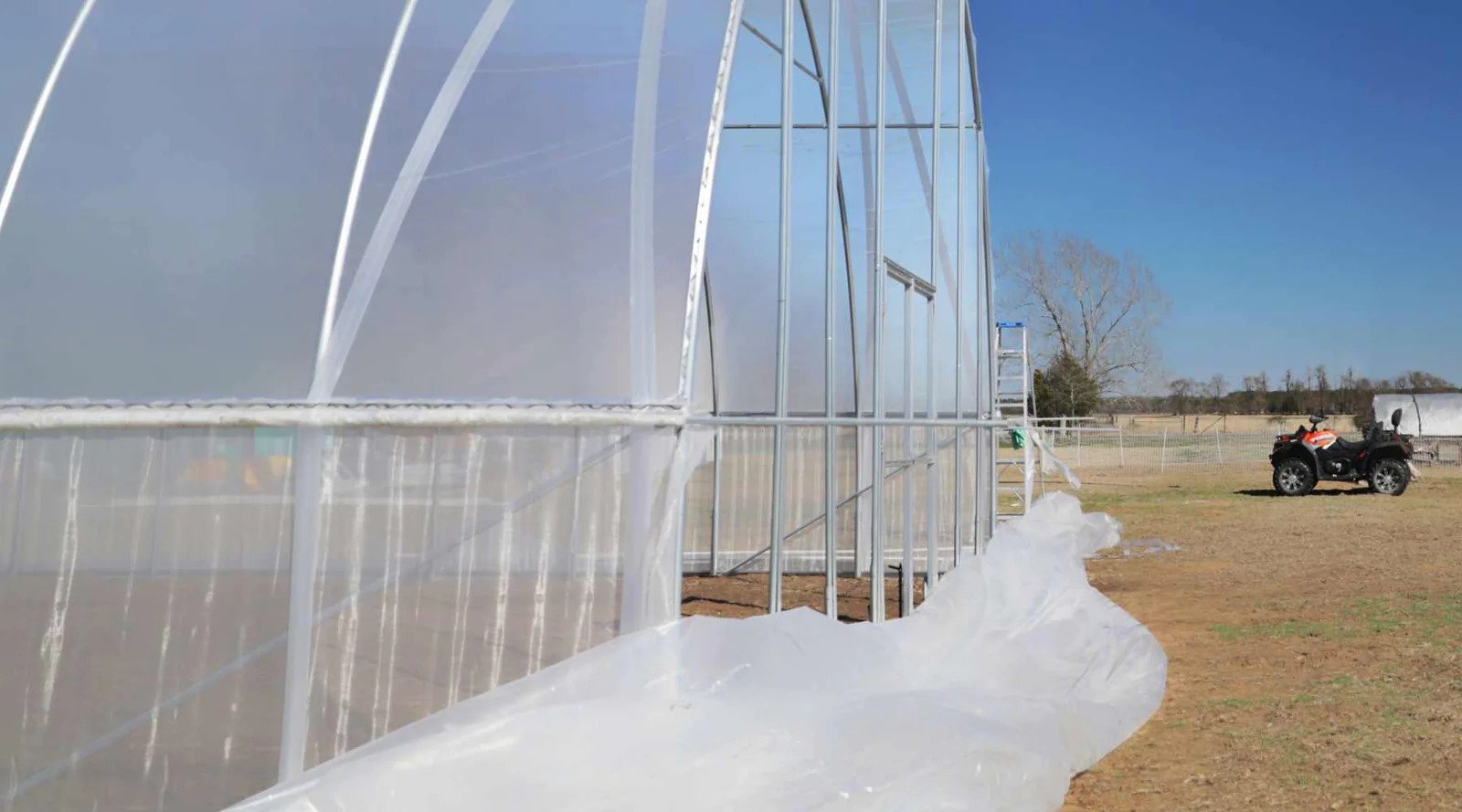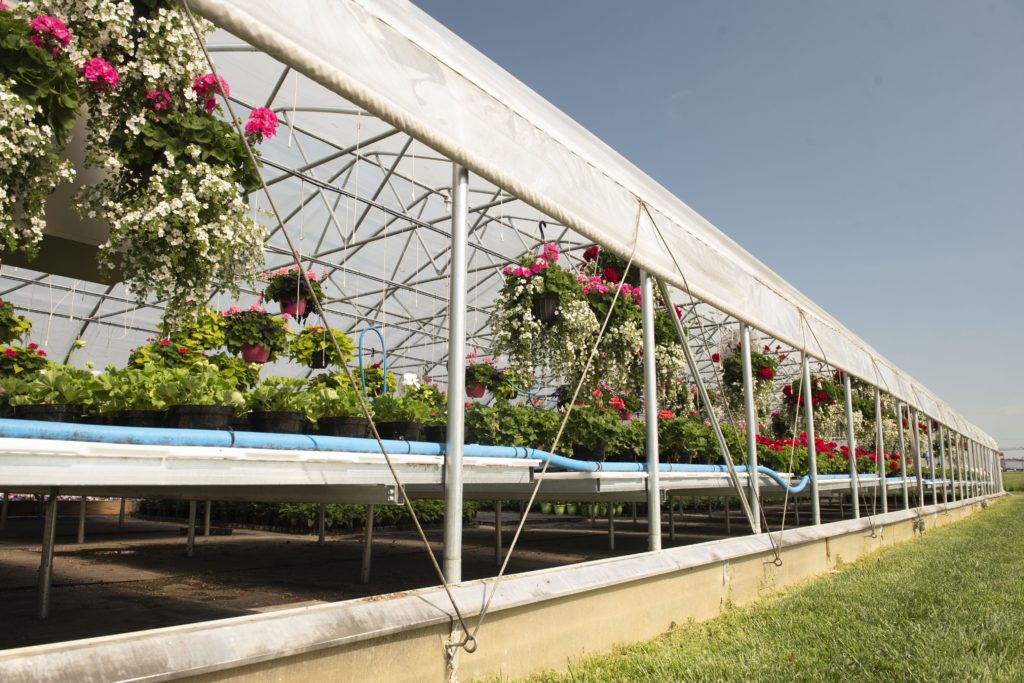Home>Gardening News and Trends>How Hard Is It To Insurance A Commercial Greenhouse


Gardening News and Trends
How Hard Is It To Insurance A Commercial Greenhouse
Modified: February 10, 2024
Discover the latest gardening trends and learn how easy it is to insure your commercial greenhouse. Explore our comprehensive coverage options today!
(Many of the links in this article redirect to a specific reviewed product. Your purchase of these products through affiliate links helps to generate commission for Chicagolandgardening.com, at no extra cost. Learn more)
Table of Contents
- Introduction
- Factors to Consider Before Insuring a Commercial Greenhouse
- Types of Insurance Coverage for Commercial Greenhouses
- Common Insurance Challenges for Commercial Greenhouses
- Steps to Insure a Commercial Greenhouse
- Cost of Insurance for Commercial Greenhouses
- Importance of Insurance for Commercial Greenhouses
- Conclusion
Introduction
Welcome to the world of commercial greenhouse gardening, where the beauty of nature meets the science of cultivation. As the demand for fresh, locally sourced produce continues to rise, commercial greenhouses have become a vital part of the agricultural industry. They provide an efficient and controlled environment for growing crops year-round, allowing farmers to maximize their yields and meet market demands.
However, like any business venture, commercial greenhouse operations come with their share of risks. From extreme weather events to crop diseases and pests, there are numerous factors that can jeopardize the success and profitability of a greenhouse. That is why having the right insurance coverage is essential for protecting your investment and ensuring the long-term viability of your business.
In this article, we will explore the various factors to consider before insuring a commercial greenhouse, the types of insurance coverage available, common insurance challenges faced by greenhouse owners, steps to insure a commercial greenhouse, the cost of insurance, and the importance of having insurance for your commercial greenhouse venture.
Whether you are a seasoned greenhouse owner or just starting out in the industry, understanding the ins and outs of greenhouse insurance will help you make informed decisions and safeguard your business against potential risks.
Let’s dive in and discover what it takes to insurance a commercial greenhouse.
Factors to Consider Before Insuring a Commercial Greenhouse
Insuring a commercial greenhouse is not a one-size-fits-all process. There are several key factors to consider before purchasing insurance coverage that meets the unique needs of your operation:
- Location: The location of your greenhouse plays a significant role in determining the risks you might face. Consider the prevailing weather patterns, susceptibility to natural disasters, and proximity to potential hazards such as chemical storage facilities or high-traffic areas.
- Type of Crops: The types of crops you grow in your greenhouse will impact the level of insurance coverage you need. Different plants have varying susceptibility to diseases, pests, and weather conditions. Determining the specific risks associated with your crop selection will help insurance providers tailor coverage to your needs.
- Greenhouse Structure: The design and construction of your greenhouse are crucial considerations for insurance coverage. Factors such as the materials used, size of the structure, and its ability to withstand extreme weather events will influence the cost and availability of insurance coverage.
- Equipment and Machinery: The equipment and machinery used in your greenhouse operations, such as heating systems, irrigation systems, and ventilation equipment, should be assessed for their vulnerability to damage or breakdown. Insurance coverage for these items can help mitigate the financial impact of unforeseen events.
- Employee Safety: Ensuring the safety of your employees is essential. Prioritize the implementation of proper safety protocols and training to reduce the risk of accidents or injuries. Insurance coverage that includes workers’ compensation can protect both your employees and your business in the event of work-related incidents.
By carefully considering these factors, you will be better equipped to select the right insurance coverage for your commercial greenhouse. Understanding the unique risks and challenges associated with your operation will enable you to tailor your coverage to best protect your investment and provide peace of mind.
Types of Insurance Coverage for Commercial Greenhouses
When it comes to insuring a commercial greenhouse, there are several types of insurance coverage available to protect your business and assets:
- Property Insurance: Property insurance covers the physical structure of your greenhouse, as well as any equipment, supplies, and inventory inside. It helps protect against damage or loss caused by fire, severe weather events, theft, or vandalism. It is crucial to accurately assess the value of your greenhouse and its contents to ensure proper coverage.
- Crop Insurance: Crop insurance is specifically designed to mitigate the financial impact of crop loss or damage. It provides coverage for factors such as natural disasters, pests, diseases, and adverse weather conditions. Crop insurance can help safeguard your investment and ensure a stable income even in the face of unexpected circumstances.
- General Liability Insurance: General liability insurance protects your business from claims related to property damage, bodily injury, or advertising injuries. This coverage is essential in the event of accidents or injuries that occur on your premises or as a result of your greenhouse operations. It provides financial protection against legal expenses and potential settlements or judgments.
- Business Interruption Insurance: Business interruption insurance compensates for lost income and ongoing expenses when your greenhouse operations are temporarily halted due to covered events such as a fire or severe weather. This coverage helps bridge the gap and ensures your business can recover and continue operating without significant financial setbacks.
- Equipment Breakdown Insurance: Equipment breakdown insurance covers the repair or replacement costs of essential equipment and machinery in the event of mechanical or electrical breakdown. This coverage is crucial for greenhouse operations heavily reliant on specialized equipment, as it helps minimize downtime and the financial impact of equipment failures.
- Workers’ Compensation Insurance: Workers’ compensation insurance provides coverage for medical expenses and lost wages for employees who suffer work-related injuries or illnesses. Greenhouse operations often involve physical labor and potential hazards, so having this coverage is not only a legal requirement but also essential for protecting your employees and business.
Consider your specific needs and consult with an insurance professional to determine which combination of coverage options is best suited for your commercial greenhouse. Understanding the types of insurance available will help you make informed decisions to safeguard your business against potential risks and uncertainties.
Common Insurance Challenges for Commercial Greenhouses
While insurance coverage is crucial for protecting your commercial greenhouse, there are specific challenges that greenhouse owners often face when it comes to obtaining adequate coverage. Understanding these challenges can help you navigate the insurance process more effectively:
- High-Risk Nature: Commercial greenhouse operations involve inherent risks, such as weather-related damages, crop diseases, and pest infestations. These risks can make it more challenging to secure affordable insurance coverage, as insurers may perceive the industry as high risk.
- Unique Structures and Equipment: Greenhouse structures and specialized equipment can be unique and costly to replace or repair. Insurers may require specific documentation and assessments of these structures and equipment to accurately determine their value and provide appropriate coverage.
- Crop Valuation: Valuing crops accurately for insurance purposes can be complex, as factors such as crop variety, maturity, expected yield, and market value need to be considered. Insurers may require detailed documentation and records to support crop valuation, which can be time-consuming and require additional administrative effort.
- Changing Weather Patterns: With climate change leading to more frequent and unpredictable weather events, insurers may become more cautious in providing coverage for greenhouse operations. Extreme weather events, such as storms, floods, or droughts, can cause significant damage to crops and structures, making it more challenging to obtain comprehensive coverage.
- Location and Environmental Factors: The location of a greenhouse can impact insurance availability and costs. Proximity to potential hazards, such as chemical storage facilities or areas prone to wildfires, can increase the perceived risk and affect insurance premiums. Insurers may also consider environmental factors, such as soil contamination, when assessing coverage options.
- Claims History: Prior insurance claims, especially those related to crop loss or property damage, can affect your ability to obtain coverage or influence the premium rates. Insurers may request information about past losses and will take them into account when determining the terms of your coverage.
Overcoming these challenges requires proactive risk management and working closely with experienced insurance professionals who understand the unique needs of commercial greenhouse operations. Through proper documentation, risk mitigation strategies, and maintaining a good claims history, you can improve your chances of obtaining comprehensive and affordable insurance coverage for your commercial greenhouse.
Steps to Insure a Commercial Greenhouse
Insuring a commercial greenhouse involves several important steps to ensure that your business is adequately protected. Here are the key steps to follow when obtaining insurance for your greenhouse:
- Assess Your Insurance Needs: Begin by assessing the specific risks and coverage needs of your commercial greenhouse. Consider factors such as location, crop type, equipment, and potential liabilities. This will help you determine the types and extent of insurance coverage required.
- Research Insurance Providers: Look for insurance providers with experience in insuring commercial greenhouses. Seek recommendations from other greenhouse owners or industry associations and carefully review the coverage options and terms offered by different insurers. Compare premiums, deductibles, and coverage limits to ensure the best fit for your business.
- Collect and Document Information: Prepare the necessary documents and information required by insurance providers. This may include property valuations, crop records, equipment inventories, and details about your greenhouse operation. Accurate and organized documentation will help insurers understand your business and offer appropriate coverage.
- Obtain Multiple Quotes: Request quotes from multiple insurance providers to compare coverage options and premiums. Consider the reputation and financial stability of the insurers, as well as their responsiveness to queries and claims processing. Remember, the cheapest option may not always offer the most comprehensive coverage.
- Customize Your Coverage: Work closely with an insurance professional to customize the insurance policy to meet your specific needs. Tailor your coverage amounts, deductibles, and endorsements based on your greenhouse structure, equipment, crops, and liabilities. Make sure you fully understand the terms and conditions of the policy before finalizing the agreement.
- Implement Risk Mitigation Measures: Adhere to best practices and safety protocols to minimize potential risks and liabilities. This may include proper maintenance of equipment, regular inspections for structural integrity, pest management strategies, and employee training programs. Insurers may offer more favorable terms and premiums for businesses that demonstrate strong risk management practices.
- Review and Update Coverage: Regularly review your insurance coverage to ensure it remains adequate as your greenhouse business evolves. As you introduce new crops, expand your operations, or make changes to your greenhouse structure, consult with your insurance provider to update your coverage accordingly. Stay proactive in managing your risks and adjusting your coverage as needed.
By following these steps, you can navigate the process of insuring your commercial greenhouse effectively. Remember, insurance is an investment in the long-term success and protection of your business, so taking the time to understand your needs and customize your coverage is crucial.
Cost of Insurance for Commercial Greenhouses
The cost of insurance for a commercial greenhouse can vary based on several factors, including the size of the greenhouse, the types of crops grown, the location, the level of coverage desired, and the insurance provider. It is essential to understand and budget for the costs associated with insuring your greenhouse. Here are some key considerations regarding the cost of insurance for commercial greenhouses:
Greenhouse Value: The value of your greenhouse structure and its contents will significantly impact the cost of insurance. The replacement cost of the greenhouse, equipment, and supplies, as well as the value of the crops grown, will be taken into account when determining the insurance premium.
Crop Value: Crop insurance premiums are typically based on the value of the crops being grown. The higher the value of the crops, the higher the premium is likely to be. Factors such as crop type, yield potential, and susceptibility to diseases and pests will also influence the cost of crop insurance.
Location: The location of your greenhouse plays a role in insurance costs. Areas prone to natural disasters or with higher crime rates may have higher insurance premiums. Similarly, proximity to potential hazards such as chemical plants or busy roads can increase the perceived risk and affect premium rates.
Insurance Coverage: The extent of insurance coverage you choose will impact the cost. Comprehensive coverage that includes property, crop, liability, and additional endorsements will have a higher premium compared to more limited coverage options.
Claims History: Your greenhouse’s claims history, including past crop losses, property damage, or liability claims, can influence the cost of insurance. Insurance providers may consider your claims history as an indicator of future risks and adjust premiums accordingly.
Risk Mitigation Measures: Taking proactive steps to mitigate risks in your greenhouse can potentially lower your insurance costs. Implementing safety protocols, maintaining equipment, and implementing pest management strategies can demonstrate to insurance providers that you are actively managing risks, which may result in more favorable premium rates.
It is important to obtain quotes from multiple insurance providers and compare not only premium rates but also the extent of coverage offered. Cheaper premiums may indicate more limited coverage or higher deductibles, so carefully review the policy terms and conditions.
Remember that while insurance may add to your operational costs, it is an essential investment to protect your greenhouse business from unforeseen events and financial losses. Consider the potential impact of not having insurance and weigh it against the costs of premiums to make an informed decision.
Importance of Insurance for Commercial Greenhouses
Insurance plays a critical role in safeguarding the long-term success and viability of commercial greenhouses. Here are key reasons why having insurance is of utmost importance for greenhouse owners:
- Financial Protection: Insurance provides financial protection against the unexpected. Whether it’s damage to your greenhouse structure, loss of crops due to adverse weather or pests, or liability claims resulting from accidents or injuries on your premises, insurance coverage can help mitigate financial losses and ensure your business can recover.
- Continuity of Operations: In the event of a significant loss or damage, insurance can provide the necessary funds to repair or replace damaged property, equipment, or crops. This ensures that your greenhouse operations can resume as quickly as possible, minimizing downtime and the impact on your business, employees, and customers.
- Liability Coverage: Greenhouse operations involve various risks, from slip-and-fall accidents to crop contamination. Liability insurance protects your business from potential lawsuits and claims, covering legal expenses, settlements, or judgments. Without liability coverage, a single incident could lead to significant financial losses that jeopardize the future of your greenhouse.
- Peace of Mind: Knowing that your greenhouse is protected by insurance can bring peace of mind. Running a greenhouse business involves many uncertainties, such as extreme weather events, pests, and diseases. Having the security of insurance coverage allows you to focus on managing and growing your business without constantly worrying about potential risks and their financial implications.
- Compliance with Financial Requirements: Insurance coverage is often mandatory or required by lenders, landlords, or regulatory authorities. Obtaining the necessary insurance policies demonstrates your commitment to responsible business practices and ensures compliance with legal and contractual obligations.
- Protection for Employees: Insurance coverage, such as workers’ compensation, helps protect your employees. In the case of work-related injuries or illnesses, workers’ compensation provides medical coverage and lost wage benefits. By providing this coverage, you demonstrate your commitment to the well-being of your employees and fulfill legal requirements.
- Peaceful Coexistence in a Community: Insurance coverage assists in maintaining strong relationships within the community. Should an event occur that results in damage to neighboring properties or causes harm to others, insurance coverage can help address any resulting liabilities, protecting your reputation and fostering positive relationships with your neighbors and community.
In a business as inherently risky as commercial greenhouse operations, having insurance coverage is not just an option; it is a necessity. The financial protection, peace of mind, and legal compliance that insurance provides are fundamental to the long-term success and sustainability of your greenhouse business.
Conclusion
Insuring a commercial greenhouse is a vital step in protecting your investment and ensuring the long-term success of your business. The unique risks associated with greenhouse operations, such as weather-related damages, crop diseases, and liability concerns, make insurance coverage essential. By understanding the factors to consider, the types of coverage available, and the common challenges faced in insuring commercial greenhouses, you can make informed decisions to safeguard your business and assets.
When insuring your greenhouse, it is important to assess your specific needs, research insurance providers, and collect accurate and organized information about your greenhouse operations. Obtaining multiple quotes and customizing your coverage based on your greenhouse structure, crops, and liabilities will give you the best chance of securing comprehensive and affordable insurance.
Remember that insurance is not just a financial burden, but rather an investment in the continuity and protection of your greenhouse business. It provides financial security, ensures the smooth functioning of your operations, and offers peace of mind. Seeking insurance coverage is not only a responsible business practice, but it may also be a requirement by lenders, landlords, or regulatory authorities.
By implementing risk mitigation measures and regularly reviewing and updating your insurance coverage, you can adapt to the evolving needs of your greenhouse business. Insurance is a critical tool in managing the uncertainties and challenges that come with greenhouse operations.
So, whether you are a seasoned greenhouse owner or just starting out in the industry, prioritize insurance coverage to protect your business and provide a solid foundation for future growth. With the right insurance policies in place, you can focus on what you do best – cultivating healthy plants, providing fresh produce, and contributing to the thriving world of greenhouse gardening.

